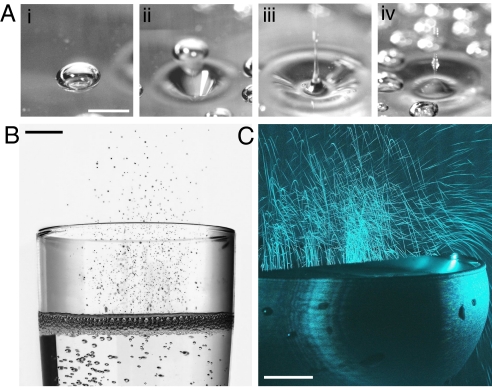Fig. 1.
Aerosois production above the free surface of a glass poured with champagne, as evidenced through high-speed photography and laser tomography techniques. (A) Reconstructed time-sequence showing four steps of the collapse of a single champagne bubble, by use of high-speed photography (11); the time interval between successive frames is ≈1 ms. (Scale bar, 1 mm.) [Reproduced with permission from ref. 11 (Copyright 2001, American Society for Enology and Viticulture).] (B) While collapsing together, the myriad of bubbles literally skim off the upper layer found at the air/champagne interface into the form of hundreds of tiny droplets ejected every second up to several centimeters above the free surface (photograph by Alain Cornu/collection CIVC). (Scale bar, 1 cm.) (C) Champagne aerosols found above the free surface of a glass, as seen through laser tomography techniques (5, 10). (Scale bar, 1 cm.) [Reproduced with permission from ref. 5 (Copyright 2008, The Royal Society of Chemistry).]

